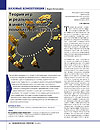Methods for Evaluating Digital Financial Assets as the Basis for Future Trade Turnover
DOI: 10.33917/es-3.189.2023.62-69
The author analyzes methods of cryptocurrency evaluation existing in foreign practice. Applicability of the comparative, income and cost approaches used in valuation activities, as well as possible methods within each of the approaches, is explored. It is determined that within the income approach, the discounted cash flow model and the exchange equation are applicable. The comparative approach involves the classic comparison of sales, while the cost approach contains two methods based on actual (energy cost method) and forecast (stock-flow ratio method) data.
References:
1. Kriptovalyuty: trendy, riski, mery: Doklad dlya obshchestvennykh konsul’tatsii [Cryptocurrencies: Trends, Risks, Measures: Public Consultation Report].
Moscow, Bank Rossii, 2022, available at: https://cbr.ru/Content/Document/File/132241/Consultation_Paper_20012022.pdf.
2. Nakamoto S. Bitcoin: A Peer-to-Peer Electronic Cash System. Combining and Splitting Value, 2008, no 9.
3. Grazhdanskii kodeks Rossiiskoi Federatsii [Civil Code of the Russian Federation]. Garant, available at: https://base.garant.ru/10164072/
4. Medium [Informational portal], available at: https://medium.com.
5. Kyriazis N., Papadamou S., Corbet Sh. A systematic review of the bubble dynamics of cryptocurrency prices. Research in International Business and Finance, 2020.
6. Cong Lin William, Ye Li, Neng Wang. Tokenomics: Dynamic adoption and valuation. The Review of Financial Studies, 2021.
7. Zhang Junhuan, Xu Yunqing. Cryptocurrency price bubble detection using log-periodic power law model and wavelet analysis. SSRN Papers, 2021.






